|
The next day, I spent
a half hour or so wandering the neighborhood. The streets are very
narrow and often connect at odd angles. I felt a rather wonderful
harmony of nature and technology as I walked along the houses. I
noticed that clothes dryers, with which I was so familiar back
home, was seldom, if ever, used here. |
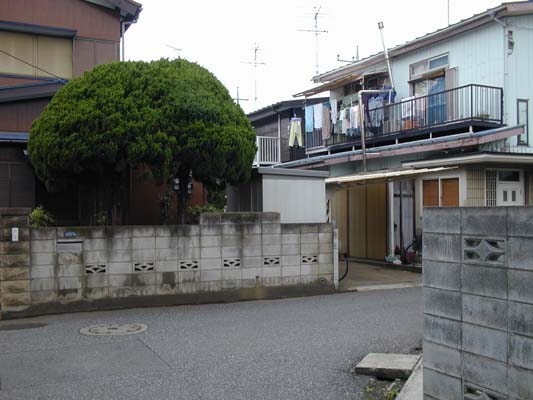 |
|
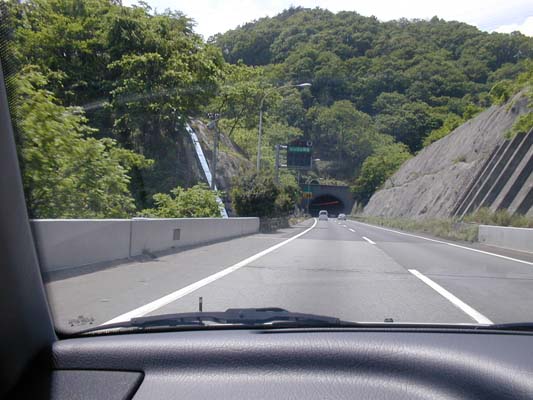 |
We left for Mount
Fuji about 11:30. As we traveled, we listened to the
Yokohama top 40 on the radio. It was an interesting mix of
Japanese and American songs. |
|
|
Around 1:00, we
stopped at an Italian restaurant for lunch. No matter what the
nationality of the restaurant, we can always expect many of the
Japanese touches like warm towels at the beginning of the meal and
chopsticks in lieu of forks. |
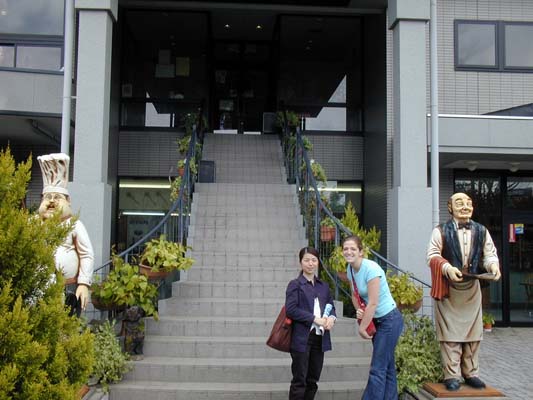 |
|
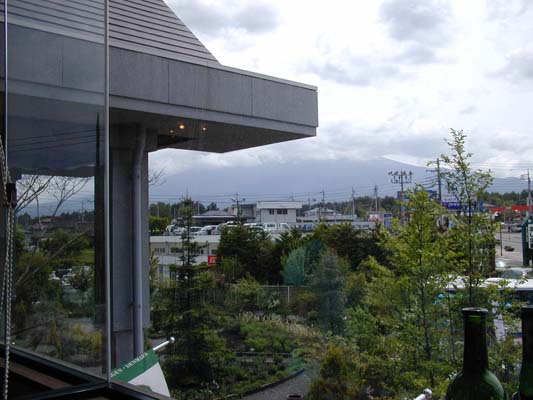 |
Looking out from the
restaurant, you can see Mount Fuji in the distance. Or rather, you
could see it if not for the dense cloud cover over the peak. From
here, we traveled up the Subaru
Line to the fifth station about half-way up the mountain. |
|
|
This is the North
side fifth station (There are eight stations up each side of the
mountain). We were naively hoping to climb the rest of the way up
to the peak the following day, but it was too early in the season
and the peak was still covered with treacherous ice. We would
modify our plans and head to Kyoto a day early instead. |
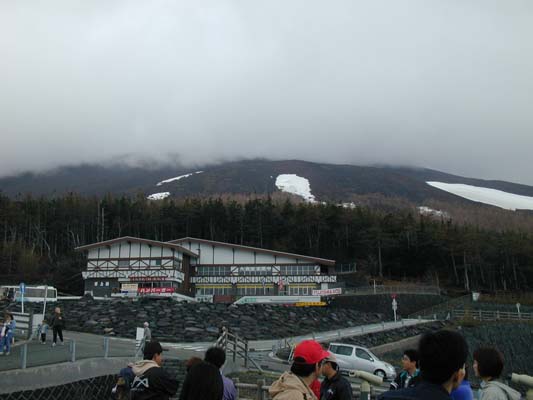 |
|
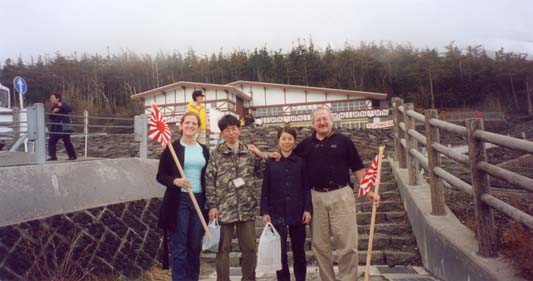 |
A group photo before
we leave. Behind us is the cloud shrouded Mount Fiji. We purchased
these flags on long staffs which would prove quite challenging to
carry with us for the rest of our trip. |
|
|
Around 6:00 we
arrived at the
Yumoto Fujiya Hotel in Hakone. This would be a good
opportunity to point out that we used the
JTB travel agency
to arrange our trip. They set up all the reservations, travel
itinerary, made hotel recommendations and in every way made our
vacation a wonderful success.
Our room was a combination of
both Japanese and Western styles separated by a paper sliding door. If we
preferred, there were futons available in the closet to make a pallet on
the tatami mat floor. On the table were all the fixings to brew green tea
for our refreshment. The hotel was magnificent and the staff had provided
everything we needed for our comfort.
|
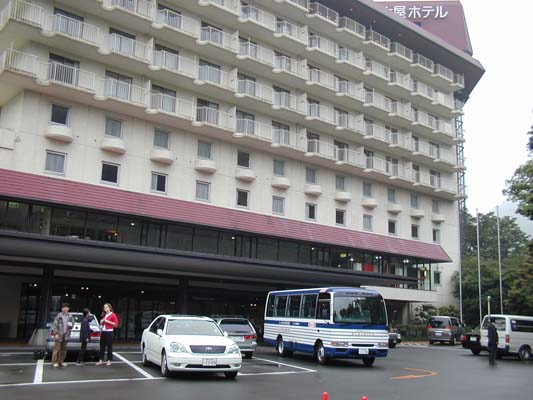 |
|
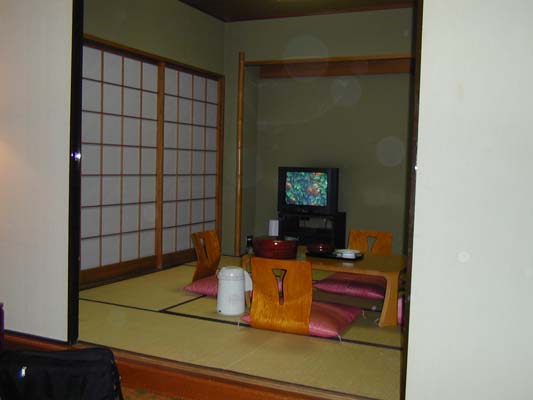 |
Once we arrived, we changed
into the provided yukata (a casual cotton kimono) and slippers. It is
usually quite acceptable to wear the yukata throughout the entire hotel,
including the restaurants.
Thanks to our host family,
they instructed us on the proper manner to wear these robes. You first
fold the right side to cover your body, then fold the left side over the
top of the right side. Following this rule is quite important as it is
only reversed in preparing the dead for cremation. Then you tie the sash
(called an obi) around your waist. Once you've tied the bow, slide the obi
around so the ribbon is behind you.
|
|
|
Even though it was
overcast, we still had a wonderful view outside the patio of our
room. After enjoying the ambiance for an hour or so, we went down
to the Himeshara restaurant for dinner. The dinner was an
enormously elaborate affair composed of 10 to 15 courses served
one at a time. All of the
dishes
were arranged for both a visual and culinary enjoyment. |
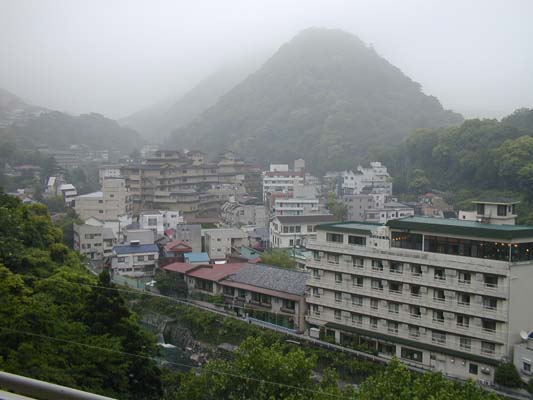 |
|
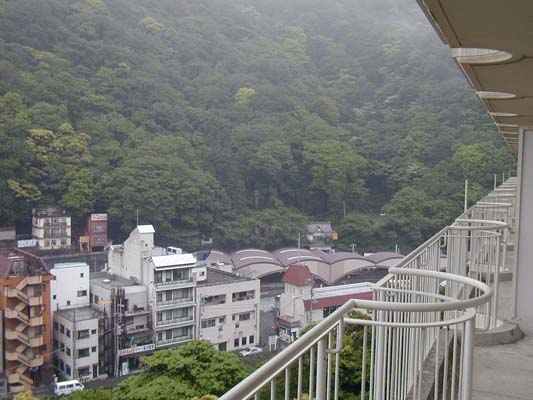 |
After dinner, we went down to
the outdoor ofuro (open bath) in the basement. Once again, our Japanese
hosts instructed us on the proper procedure. Jennifer and her friend went
in the ladies side and her friend's father and I went into the men's side.
The first stop is the dressing room where you put your slippers and yukata
into a cubby-hole and pick up your
tenugui
(small towel). In the bath itself, you must first wash yourself completely
using the provided stool, water tap, soap, shampoos, etc. Do NOT enter the
water before washing. And yes, you must completely disrobe. If
you're the modest sort, the Japanese public bath is not for you.
It was a glorious experience
and I emerged refreshed and rejuvenated.
|
|